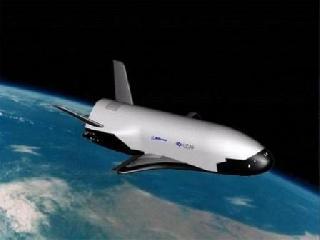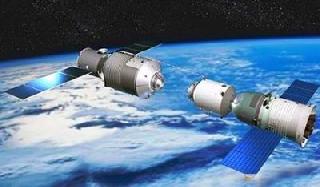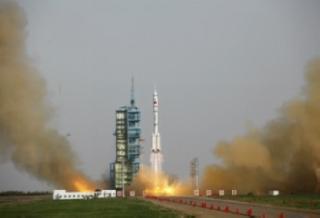
Unmanned Space Plane X-37B. A file photo
LOS ANGELES (AP): An unmanned US Air Force space plane steered itself to a landing early Saturday at a California military base, capping a 15-month clandestine mission.
The spacecraft, which was launched from Cape Canaveral Air Force Station in Florida in March 2011, conducted in-orbit experiments during the mission, officials said.
It was the second such autonomous landing at the Vandenberg Air Force Base, 209 kilometres northwest of Los Angeles. In 2010, an identical unmanned spacecraft returned to Earth after seven months and 146 million kilometres in orbit.
The latest homecoming was set in motion when the stubby-winged robotic X-37B fired its engine to slip out of orbit, then pierced through the atmosphere and glided down the runway like an airplane.
"With the retirement of the Space Shuttle fleet, the X-37B OTV programme brings a singular capability to space technology development," said Lt Col Tom McIntyre, the X-37B's programme manager. "The return capability allows the Air Force to test new technologies without the same risk commitment faced by other programmes. We're proud of the entire team's successful efforts to bring this mission to an outstanding conclusion."
With the second X-37B on the ground, the Air Force planned to launch the first one again later this year. An exact date has not been set.
The twin X-37B vehicles are part of a military programme testing robotically controlled reusable spacecraft technologies. Though the Air Force has emphasised the goal is to test the space plane itself, there's a classified payload on board -- a detail that has led to much speculation about the mission's ultimate purpose.
Some amateur trackers think the craft carried an experimental spy satellite sensor judging by its low orbit and inclination, suggesting reconnaissance or intelligence gathering rather than communications.
Harvard astrophysicist Jonathan McDowell, who runs Jonathan's Space Report, which tracks the world's space launches and satellites, said it's possible it was testing some form of new imaging.
The latest X-37B was boosted into orbit atop an Atlas 5 rocket. It was designed to stay aloft for nine months, but the Air Force wanted to test its endurance. After determining the space plane was performing well, the military decided in December to extend the mission.
Little has been said publicly about the second X-37B flight and operations. At a budget hearing before the Senate Armed Services subcommittee in March, William Shelton, head of the Air Force Space Command, made a passing mention.
 Previous Article
Previous Article Next Article
Next Article













The Indian Air Force, in its flight trials evaluation report submitted before the Defence Ministry l..
view articleAn insight into the Medium Multi-Role Combat Aircraft competition...
view articleSky enthusiasts can now spot the International Space Station (ISS) commanded by Indian-American astr..
view article